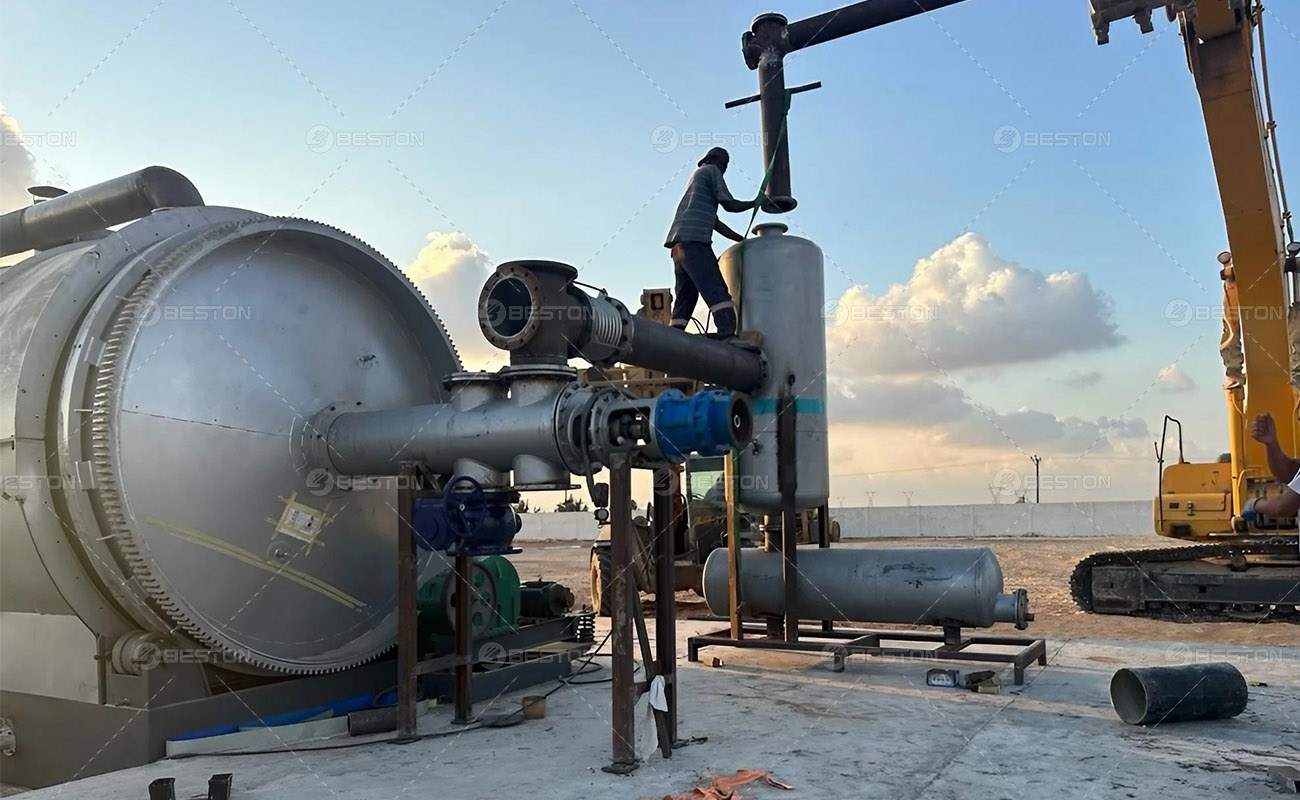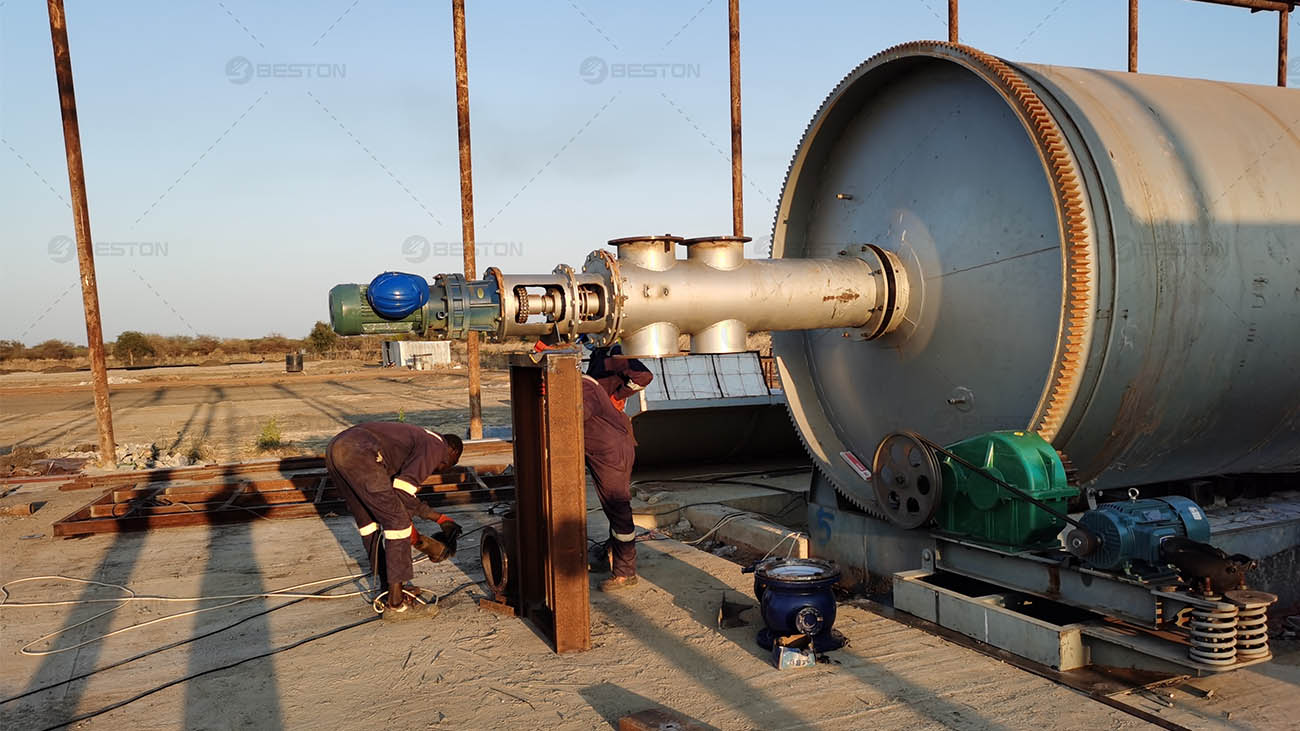How to Improve Oil Sludge Thermal Desorption Efficiency
The management of oil sludge has become a critical concern in the petroleum and industrial sectors due to environmental regulations and the need for sustainable waste disposal methods. Thermal desorption, particularly in continuous systems, offers an effective solution for the treatment of oil sludge, allowing for the recovery of valuable hydrocarbons while minimizing environmental impact. This article explores several strategies to enhance the efficiency of a thermal desorption unit, ensuring optimal performance and resource recovery.

Understanding Thermal Desorption
Thermal desorption is a process that utilizes heat to vaporize contaminants from solid or semi-solid materials, such as oil sludge. In this process, the sludge is heated, causing the volatile components to evaporate and subsequently condense into a recoverable liquid phase. The continuous pyrolysis plant is particularly advantageous, as they allow for a steady flow of feedstock, enhancing throughput and operational efficiency.
Factors Affecting Thermal Desorption Efficiency
1. Feedstock Characteristics
The composition of the oil sludge significantly influences the thermal desorption process. Variations in moisture content, viscosity, and the presence of heavy metals can affect the thermal conductivity and heat transfer within the sludge.
Moisture Content
High moisture content in oil sludge can impede thermal efficiency. It is essential to pre-treat the feedstock to reduce moisture levels. Techniques such as mechanical dewatering or centrifugation can be employed to separate excess water before the thermal desorption process, allowing for improved heat transfer and quicker desorption rates.
Viscosity and Composition
The viscosity of the sludge can also hinder effective heat transfer. Lower viscosity allows for easier flow through the thermal desorption unit. Pre-treatment methods like heating or diluting the sludge can reduce viscosity, facilitating better thermal performance.
2. Temperature Optimization
The operating temperature is one of the most critical factors influencing the efficiency of a thermal desorption unit. Different hydrocarbons have varying boiling points, and achieving the optimal temperature is crucial for maximizing hydrocarbon recovery.
Temperature Profiling
Implementing a temperature profiling strategy within the thermal desorption unit can enhance efficiency. This involves maintaining different temperature zones within the unit, where the initial heating can focus on volatilizing lower-boiling-point compounds, followed by gradual increases to recover heavier fractions. By fine-tuning the temperature settings, operators can achieve higher overall recovery rates while minimizing energy consumption.
3. Heat Transfer Mechanisms
The efficiency of heat transfer directly impacts the thermal desorption process. Optimizing heat transfer mechanisms can enhance the overall desorption efficiency.
Heat Exchangers
Utilizing efficient heat exchangers can improve thermal transfer. Incorporating high-performance exchangers can facilitate the rapid heating of the sludge, thus reducing the time required for effective desorption. Advanced designs, such as counter-flow or plate heat exchangers, can further enhance efficiency by maximizing surface area for heat transfer.
Insulation
Proper insulation of the oil sludge treatment system is essential to minimize heat loss during operation. High-quality insulating materials can maintain the desired temperature within the unit, reducing energy requirements and improving overall efficiency.
4. Continuous Operation Strategies
Continuous thermal desorption units have distinct advantages over batch systems, including higher throughput and lower labor costs. However, to fully capitalize on these benefits, specific strategies must be implemented to ensure smooth continuous operation.
Feed Rate Control
Maintaining a consistent feed rate is crucial for the efficient operation of a continuous thermal desorption unit. Fluctuations in the feed rate can lead to inefficient heating and desorption cycles. Implementing automated control systems that monitor and adjust the feed rate based on real-time processing conditions can enhance stability and performance.
Process Monitoring and Automation
Incorporating advanced monitoring systems and automation technologies can significantly enhance the efficiency of a continuous thermal desorption unit. Real-time data acquisition systems can provide insights into operational parameters, allowing for timely adjustments to optimize performance. This can include temperature adjustments, feed rate control, and monitoring of emissions to ensure compliance with environmental regulations.
5. Post-Processing Techniques
After thermal desorption, the recovered oil and residual solids may require further treatment to meet industry standards or regulatory requirements.
Oil Treatment
The quality of the recovered oil can be enhanced through post-treatment methods, such as filtration or distillation. Implementing these techniques can increase the marketability of the recovered product and ensure compliance with environmental standards.
Residual Solid Management
Managing the residual solids effectively is critical for sustainability. Incorporating additional processing steps, such as stabilization or solidification, can facilitate safe disposal or potential reuse of the by-products generated during thermal desorption.

Conclusion
Improving the efficiency of thermal desorption units for oil sludge treatment requires a multifaceted approach, focusing on feedstock characteristics, temperature optimization, heat transfer mechanisms, continuous operation strategies, and post-processing techniques. By implementing these strategies, operators can maximize hydrocarbon recovery, enhance overall process efficiency, and contribute to a more sustainable approach to oil sludge management. As industries continue to prioritize environmental responsibility, optimizing thermal desorption processes will play a pivotal role in resource recovery and waste minimization. Contact Beston Group for more information on oil sludge recycling.